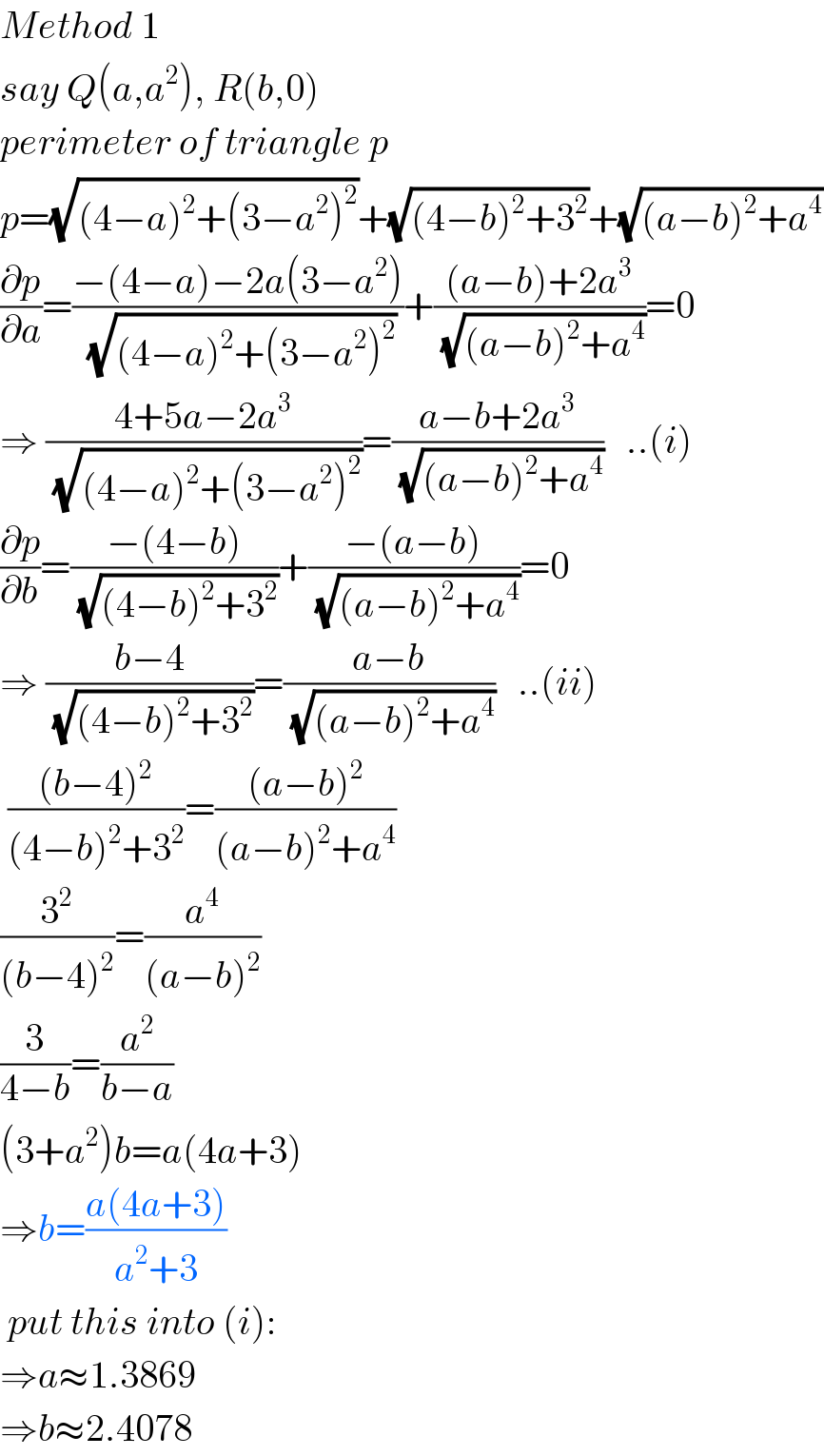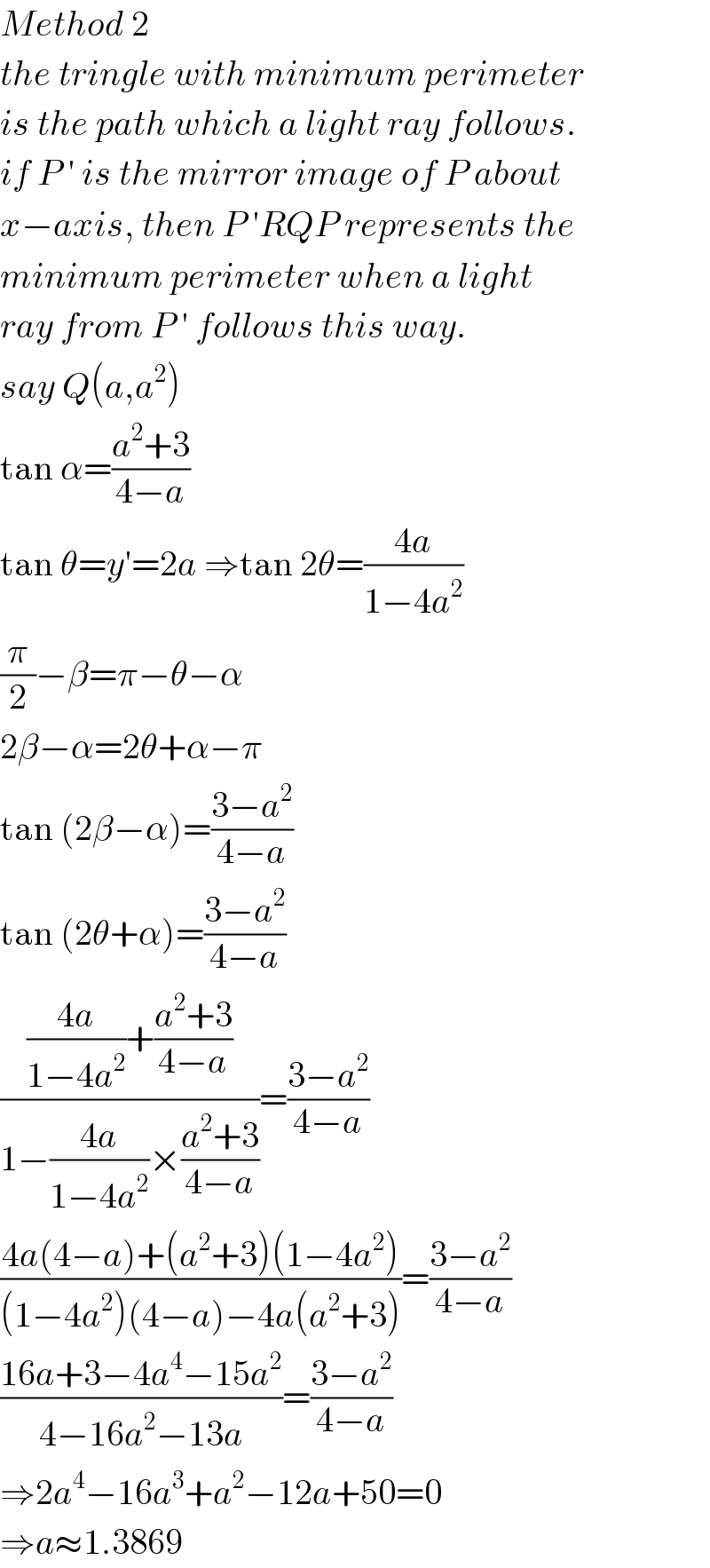
Question and Answers Forum
Question Number 83767 by mr W last updated on 05/Mar/20

Commented by mr W last updated on 06/Mar/20

Answered by mr W last updated on 06/Mar/20

Commented by jagoll last updated on 06/Mar/20

Answered by mr W last updated on 06/Mar/20

Commented by mr W last updated on 06/Mar/20

Commented by jagoll last updated on 06/Mar/20

